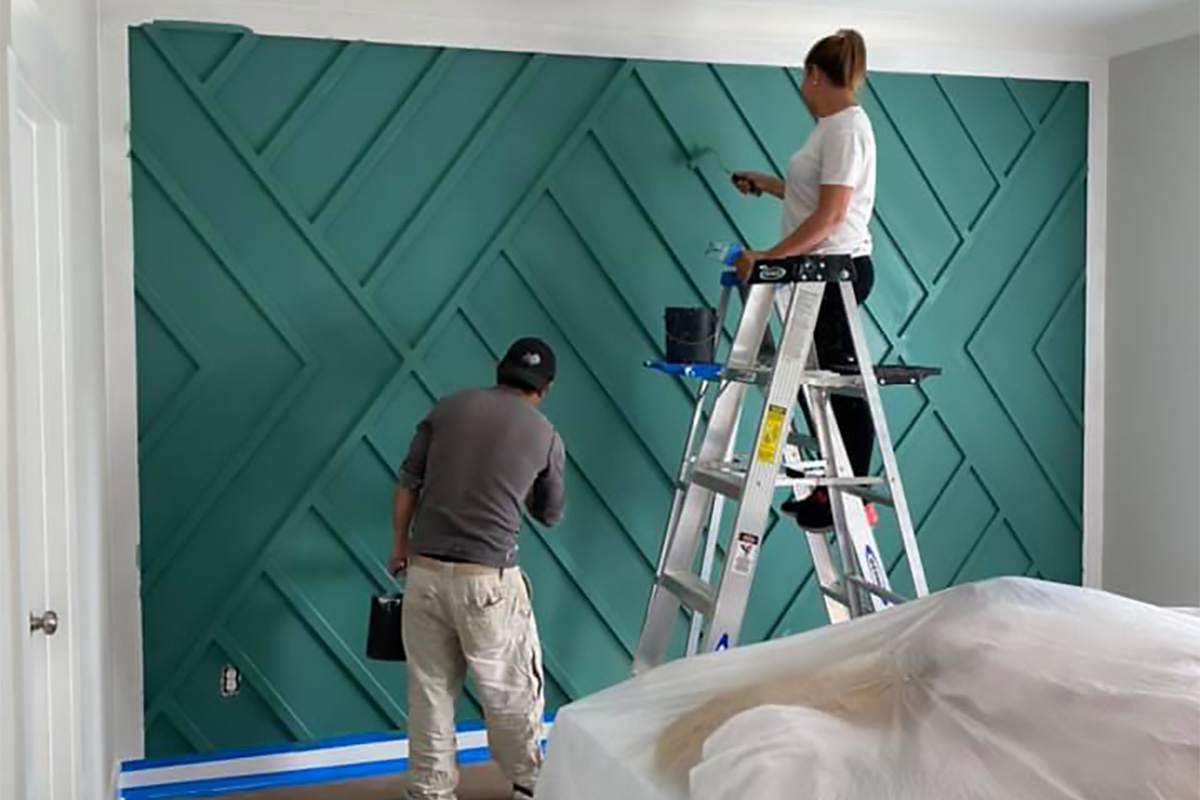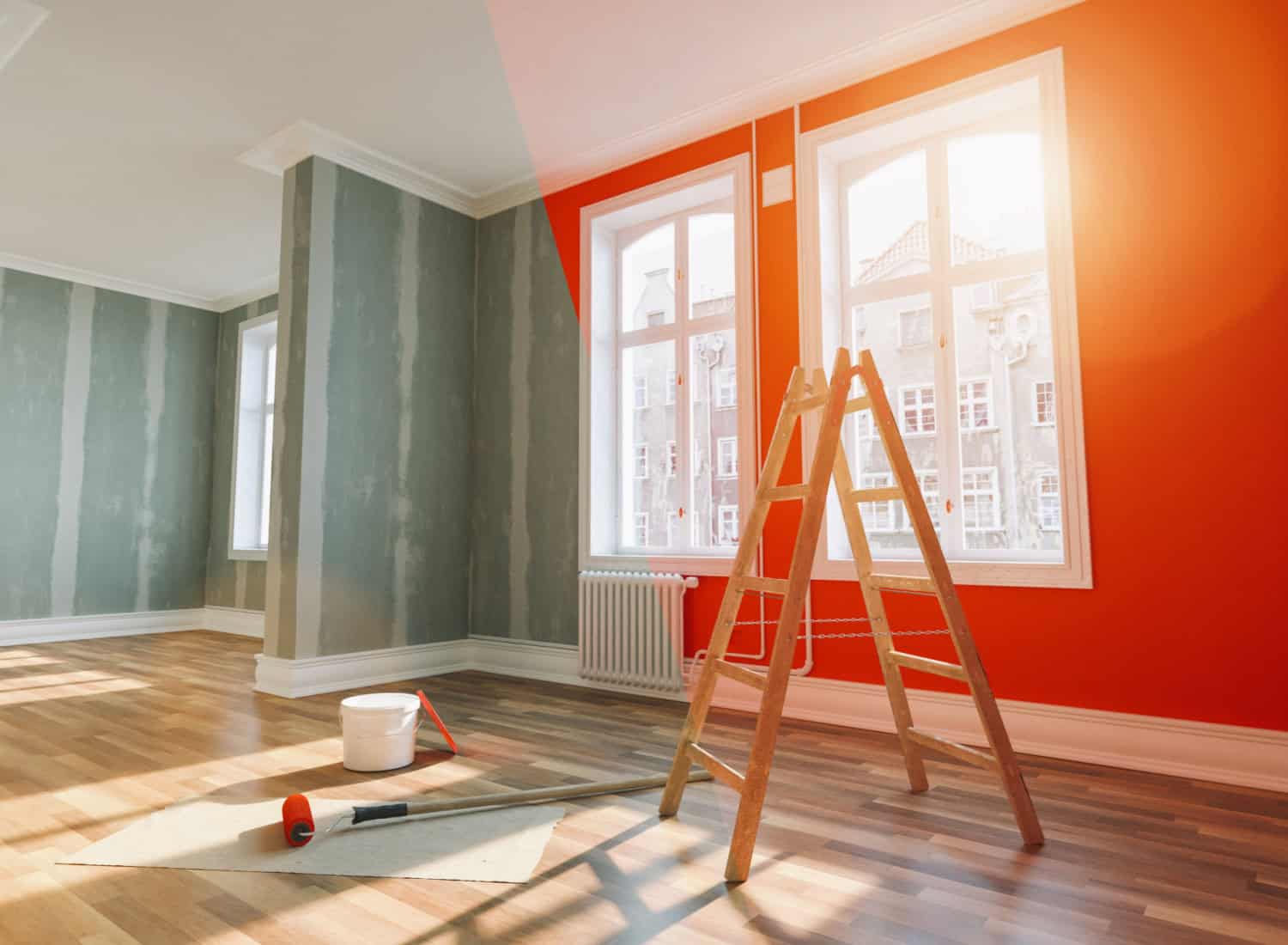Professional Lakewood Interior Painting Services for a Fresh Home Makeover
Professional Lakewood Interior Painting Services for a Fresh Home Makeover
Blog Article
Enhance Your Interior Decoration With Comprehensive Shade Examination
The combination of shade assessment right into indoor style offers an unique chance to fine-tune and boost the visual and emotional vibration of a space. By engaging with a skilled shade expert, you can navigate the intricacies of shade choice, making sure that your options not just complement architectural attributes however additionally resonate with individual style and mental influence.
Advantages of Shade Assessment

Furthermore, color appointment help in making the most of natural light and enhancing spatial understanding. Lighter tones can make a space show up more extensive, while darker tones produce an intimate setup. Cleveland Metro Painting Specialists. This strategic application of color can dramatically influence the general atmosphere of any kind of interior room
Additionally, specialist consultants possess a detailed understanding of present trends and ageless standards, making sure that the selected shades will certainly remain appealing gradually. This insight can conserve clients from expensive redesigns in the future. Color assessment empowers clients by offering them with a clear vision and instructions, cultivating self-confidence in their layout options and inevitably leading to a much more rewarding and effective interior layout end result.
Recognizing Shade Psychology
The relevance of shade psychology in indoor design can not be overemphasized, as it delves right into the emotional and emotional effects that numerous shades can stimulate in individuals. Colors can affect state of mind, habits, and even productivity, making them an essential consideration in any kind of style task.
As an example, warm colors such as red, orange, and yellow are often related to power and warmth. They can stimulate sensations of excitement and comfort, making them appropriate for social areas like living kitchen areas or rooms. On the other hand, awesome colors like blue, eco-friendly, and purple often tend to stimulate peace and harmony, making them excellent for bedrooms or meditation areas.
In addition, making use of neutral tones can create a well balanced environment by allowing the bolder shades to attract attention without frustrating the senses. Understanding these psychological influences makes it possible for designers to create spaces that not just look visually pleasing yet additionally advertise emotional health.
Integrating shade psychology into interior design entails a thoughtful option of tones tailored to the intended feature of each room, inevitably enhancing the total experience for its passengers. This awareness is essential for attaining a harmonious and useful indoor atmosphere.
The Shade Wheel Discussed
Recognizing the partnerships between shades is vital for reliable interior decoration, and the shade wheel acts as a beneficial tool in this procedure. The color wheel, established by Isaac Newton in the 17th century, shows the spectrum of shades arranged in a round layout. It makes up primaries-- red, blue, and yellow-- that can not be developed by mixing various other colors. Second shades, created by integrating main shades, consist of green, orange, and purple. Tertiary colors result from mixing a primary and a second shade, resulting in colors such as green and red-orange.
The color wheel assists developers comprehend the partnerships in between shades, including complementary, analogous, and triadic systems. Corresponding colors, located opposite each other on the wheel, produce vivid contrasts that can invigorate a room.
Using the shade wheel in interior decoration not only enhances aesthetic charm but likewise evokes particular feelings and atmospheres, making it a crucial recommendation for color assessment. Understanding these partnerships inevitably encourages designers to develop rooms that are both aesthetically fascinating and functional.
Selecting the Right Palette
An appropriate shade scheme can combine a room, enhance its features, and stimulate desired emotions. Various rooms offer different functions and require palettes that show their designated usage; for circumstances, peaceful shades such as soft blues or eco-friendlies work well in bed rooms, promoting relaxation.
Following, think about the all-natural light offered. Light can dramatically change how shades show up, so it is important to evaluate the area at different times of the day. Furthermore, think about existing architectural elements and furnishings. A harmonious palette should match these attributes, producing a cohesive appearance throughout the space.
When choosing shades, use the 60-30-10 policy, which suggests that 60% of the area ought to be a dominant shade, 30% a secondary color, and 10% an accent shade. This proportion makes certain equilibrium and visual passion (Cleveland Metro Painting Specialists). Example colors on the wall surfaces before dedicating, as this allows you to see exactly how the shades this link interact with one an additional and the general ambiance they produce in your indoor layout project.
Collaborating With a Color Specialist

When functioning with a color expert, the procedure usually starts with a first appointment. During this conference, you'll discuss your vision, preferences, and the existing components in your space. The expert will certainly evaluate your requirements and may recommend particular shade palettes that align with your goals.
After developing a direction, the consultant will certainly supply examples and visual aids to aid you imagine the recommended color pattern. This step is essential, as colors can appear in a different way under varying lighting conditions.
Furthermore, a color specialist can assist you in selecting complementary furnishings, art work, and accessories to harmonize with your selected palette. By collaborating closely, you can accomplish a polished visual that elevates your interiors and creates a welcoming atmosphere. Inevitably, the proficiency of a color consultant can dramatically improve the general effect of your design project.
Conclusion
In summary, detailed shade examination works as an essential tool for boosting interior style. By leveraging expert expertise of shade psychology and spatial dynamics, a customized shade palette can be developed to evoke specific emotions and create an unified atmosphere. This calculated strategy not only cultivates a natural style story but also minimizes the threat of expensive redesigns. Eventually, involving with a this shade specialist guarantees a notified and cosmetically pleasing outcome, elevating the total experience of the area.
By involving with a seasoned color expert, you can navigate the complexities of shade option, making certain that your options not just complement architectural functions however additionally resonate with individual style and psychological impact. It comprises primary shades-- red, blue, and yellow-- that can not be developed by mixing other shades.The shade wheel helps designers grasp the partnerships in between colors, consisting of corresponding, analogous, and triadic schemes.When selecting shades, use the 60-30-10 regulation, which suggests that 60% of the area need to be a leading shade, 30% a second color, and 10% an accent shade. By leveraging professional expertise of shade psychology and spatial characteristics, a tailored color scheme can be developed to evoke specific emotions and create an unified atmosphere.
Report this page